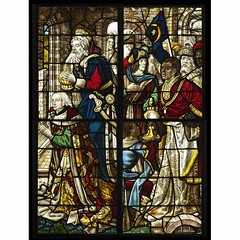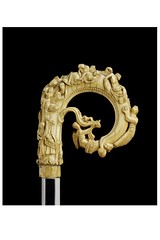By Stuart Frost
 Christmas is almost upon us. Everyone working on the project is looking forward to having a well earned break. Naturally enough Christmas has been a popular subject for discussion in the press this week. Midnight Mass, for example, is being held earlier in many churches this year to avoid disruption by members of the public who have over indulged in pubs and bars. Apparently attendance at churches at Christmas has been increasing since 2000.
Christmas is almost upon us. Everyone working on the project is looking forward to having a well earned break. Naturally enough Christmas has been a popular subject for discussion in the press this week. Midnight Mass, for example, is being held earlier in many churches this year to avoid disruption by members of the public who have over indulged in pubs and bars. Apparently attendance at churches at Christmas has been increasing since 2000.
The subject of whether Nativity plays should be held or not has been raised and debated again. Apparently one school cancelled their play so that the students could concentrate on their studies instead. The band Girls Aloud are taking part in their own version of a Nativity play on TV. It sounds interesting but I will probably give it a miss.
I’ll avoid any controversial contemporary debates here. Instead I’ve just selected a couple of images of beautiful objects that have a festive connection. They are both linked by the theme of gift-giving. The glass panel above illustrates the Adoration of the Magi. Here the three kings have brought gifts of gold, frankincense and myrrh to present to the infant Jesus. In medieval and Renaissance art the three kings were often understood as representing the known world, Europe, Asia and Africa. The three gifts also had symbolic meaning.
The ivory crozier head to the left was once part of a ceremonial staff that belonged to a bishop or abbot. It’s connection with gift-giving is through the presence of Saint Nicholas. If you look carefully at the outer curve of the crozier, to the right, you should be able to Nicholas stretching upwards. He is giving a bag of money to an impoverished nobleman, thus saving the three daughters of the man from prostitution. In the centre of the crozier head an angel supports a tendril which places Jesus at the centre of the composition, on one side is the Agnus Dei (Lamb of God), on the other the infant Christ.
The crozier head is an exquistely carved object that required a remarkably high level of skill and craftsmanship to make. It was probably owned by an abbot or bishop who belonged to an institution dedicated to Saint Nicholas or perhaps simply shared the same name. The story of Saint Nicholas was a popular one at this time.
Today, of course, it is the names Santa Claus and Father Christmas that tend to dominate the Christmas festivities and celebrations. I hope that everyone enjoys the festive break. The next blog entry will be posted here early in January 2008.
